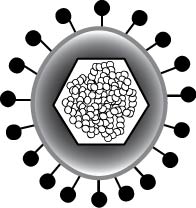
|
A wide extent of inter-strain diversity in virulent and vaccine strains of alpha-herpesviruses.
Szpara et al. PLoS Pathog 7(10): e1002282 |
| Home |
|---|
|
Abstract
|
| Explore |
|
A guide to this website, with links to related resources
|
| Scripts |
|
A guide to the scripts with instructions on their use
|
| Download |
|
Download links for data and files
|
| Supplement |
|
Supplementary Figures and Tables
|
| Authors |
|
|
| Home |
|---|
|
Alpha-herpesviruses are widespread in the human population, and include herpes simplex virus 1 (HSV-1) and 2, and varicella zoster virus (VZV). These viral pathogens cause epithelial lesions, and then infect the nervous system to cause lifelong latency, reactivation, and spread. A related veterinary herpesvirus, pseudorabies (PRV), causes similar disease in livestock that results in significant economic losses. Vaccines developed for VZV and PRV serve as useful models for the development of an HSV-1 vaccine. We present full genome sequence comparisons of the PRV vaccine strain Bartha, and two virulent PRV isolates, Kaplan and Becker. These genome sequences were determined by high-throughput sequencing and assembly, and present new insight into the attenuation of a mammalian alpha-herpesvirus vaccine strain. We find many previously unknown coding differences between PRV Bartha and the virulent strains, including changes to the fusion proteins gH and gB, and over forty other viral proteins. Inter-strain variation in PRV protein sequences is much closer to levels previously observed for HSV-1 than for the highly stable VZV proteome. These PRV genomes also contain a large number of short sequence repeats (SSRs), which vary in length between PRV strains. The prevalence of SSRs in PRV is twice that of HSV-1 and the extremely large DNA virus Mimivirus, and 6-fold higher than the SSR content of VZV. CCCTC-binding factor, CTCF, is a mammalian chromatin insulator and transcription factor that binds in SSRs sites of HSV-1 and other herpesviruses; we find SSR-based inter-strain variation in CTCF binding sites in both PRV and HSV-1. Finally, we detected a small number of polymorphic bases within each plaque-purified PRV strain, and we further characterized them by passaging and resequencing. These data add to growing evidence that even plaque-purified stocks of stable DNA viruses exhibit limited sequence heterogeneity, which likely seeds future strain evolution. |
For questions about this website, send mail to the
Genomics Bioinformatics Group
at Princeton University.
Last updated: 27 December 2011